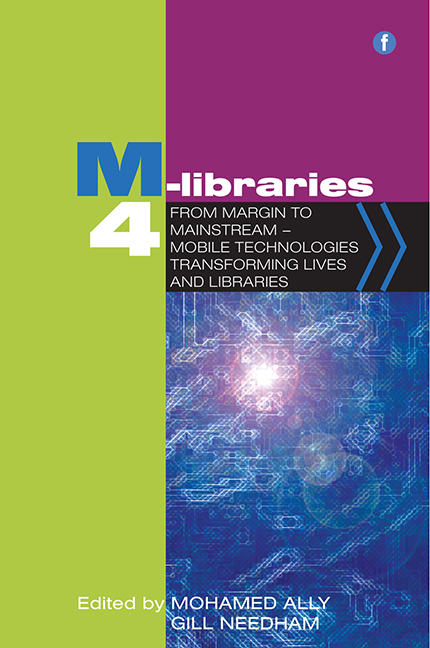7 - If you tweet will they follow? Promoting library resources and services to a mobile audience through social media
Published online by Cambridge University Press: 10 September 2022
Summary
Introduction
This chapter details the implementation and operation of the @unilibrary Twitter account for the University of Melbourne Library. In 2010 the account was established, and initially linked to the Library's Facebook account. In June 2011 this changed, with a librarian being introduced to actively monitor the account and interact with patrons.
The following discussion is a personal account of how the account developed: replying to complaints; harnessing the full potential of Twitter through imaginative and informative tweets (as opposed to institutional broadcasting); developing a distinct ‘voice’; actively searching for and interacting with new and existing library users; chasing the elusive retweet; what resources should be highlighted. And, ultimately, how this impacts on an already time-poor librarian.
What is Twitter?
Twitter was launched in 2006 and is a free, micro-blogging social media tool available across a myriad of mobile devices including iPhone, iPad, Android, BlackBerry, Windows 7 and SMS. Through the brevity of its messages or tweets (140-character limit), it engages naturally with a mobile audience and acts as a powerful networking tool through its speed and reach.
In Australia, 20 million people (89%) own a mobile phone (ACMA, 2011) with 2.1 million (1%) being active Twitter users (Cowling, 2012) and 11.8 million on Facebook (Cowling, 2012).
The University of Melbourne and social media
The University of Melbourne is one of the oldest universities in Australia and home to 50,000 students and 7000 staff. There are ten library locations.
In August 2010 the Library marketing manager established Facebook and Twitter accounts for the Library. However, due to time constraints the Twitter account was simply linked to the Facebook account, so anything posted to Facebook also appeared on Twitter.
The adoption of social media was undertaken so that the Library could:
■ interact with customers who felt more comfortable using social media as a means of accessing information
■ appear more human and accessible
■ be where its customers are
■ treat face-to-face and online queries the same, and hence provide equity of access.
This adoption also coincided with the introduction of Library Chat (realtime online conversations) and physical changes in the main Arts library, with the development of a flexible open space (Ellis and Kealy, 2011).
- Type
- Chapter
- Information
- M-Libraries 4From Margin to Mainstream - Mobile Technologies Transforming Lives and Libraries, pp. 59 - 66Publisher: FacetPrint publication year: 2014



